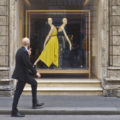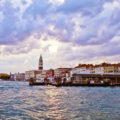
All roads may lead to Rome, but it’s still an hour’s drive away from Civitavecchia, where cruise ships have to dock.
That means with travel time, a day on our own excursion to Rome from Oceania Cruise’s newly renovated Sirena, allows us about six hours to have a delightfully Roman experience.
How to make the best use of it? It’s prime tourist season and the classically must-see sites are mobbed. I call them the Big Five: the Roman Forum and Colosseum, the Vatican, Piazza Navona, the Trevi Fountain and the Pantheon.
If, like us, you’ve explored them on previous experiences in the Eternal City, here are five fascinating day trip destinations to explore that aren’t Ground Zero for tourism, but well worth a visit.
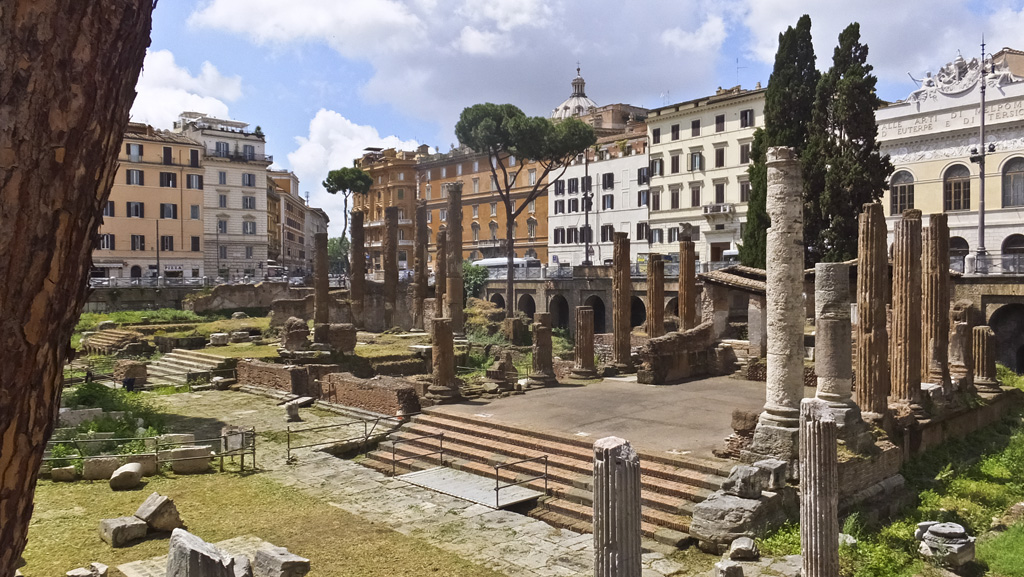
1) Don’t Cry for Torre Argentina
Et tu, Brute?
The offing of Julius Cesar on the Ides of March of 44 B.C. is arguably the most famous slasher scene ever and a turning point in history. But it seems the Romans were as anxious as Marc Antony to bury Cesar rather than praise him.
The site of Pompey’s Theater, where the deed was done, should have become a landmark, but it was inexplicably forgotten and buried for centuries. Only an accident brought the site back to light.
A colossal head and arms of a marble statue was discovered in 1927 during urban renewal work in Largo di Torre Argentina square, which is about half a mile from the Roman Forum. Digging down 40 feet, archeologists found the walls of the theater and the porch where Cesar breathed his last. The entire block’s now been excavated as an evocation of the glories that were Rome, including ornate columns and decorations of four temples that date to the fourth century B.C.
There’s no admission charge to walk down a stairway and stand at the spot where history happened, although the rest of the site is off limits and viewable only from street level.
It’s a different story for stray cats. There are hundreds that call the ornate ancient ruins home and they’re in good health because the city animal authority takes care of their spaying and feeding.
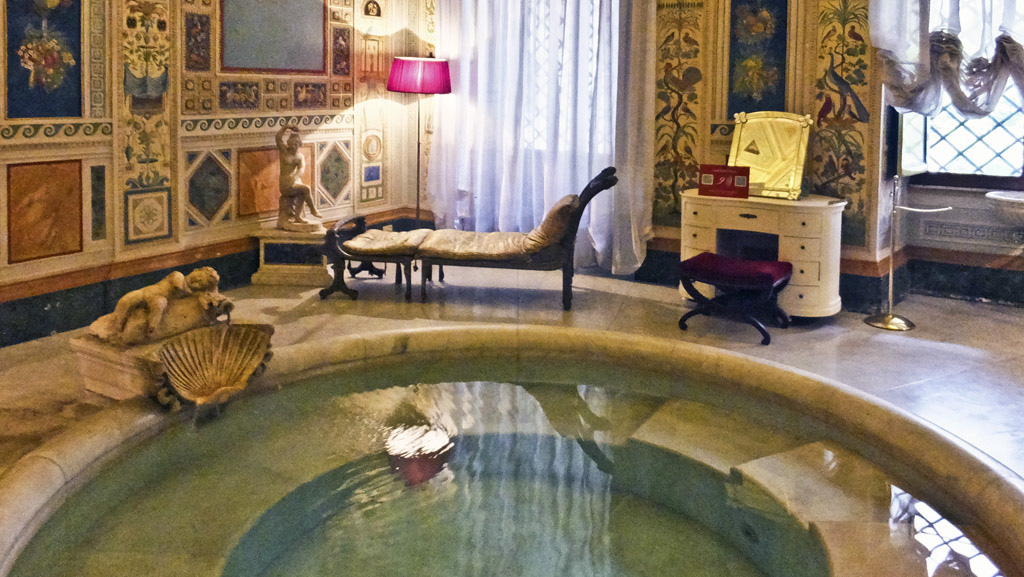
2) The Innocence of Palazzo Doria Pamphilj
I swear, I’m Innocent.
It’s a claim that at least one member of a fabled Roman family was able to make with some truth. When Giovanni Battista Pamphilj was elected Pope in 1664, he took the name Innocent X. He was part of a fabulously wealthy family that through intermarriage became extremely well connected both in Rome and Florence and had an eye for art.
The family’s palace — which covers one of Rome’s most prestigious blocks along the Piazza Venezia and is still occupied by the family — got suitably well decorated by Innocent and his family over 400 years. The collections include dozens masterworks by Velazquez, Raphael, Caravaggio and Titian, Filippo Lippi’s Annunciation and a bust of Innocent X sculpted by Bernini for the Jubilee Year of 1650.
There are two options, depending on the time you have. The museum’s extensive galleries are open daily from 9 a.m. to 7 p.m. Or, if the family–that still calls the palace home–is out of town, a treat is to get a guided tour of their private apartments .
The remarkably ornate rooms include a dressing room with its own plunge pool and bed chambers with canopies 14 feet tall. On priceless antique night stands are signs of domestic life, such as family photos and even kids’ coloring books.
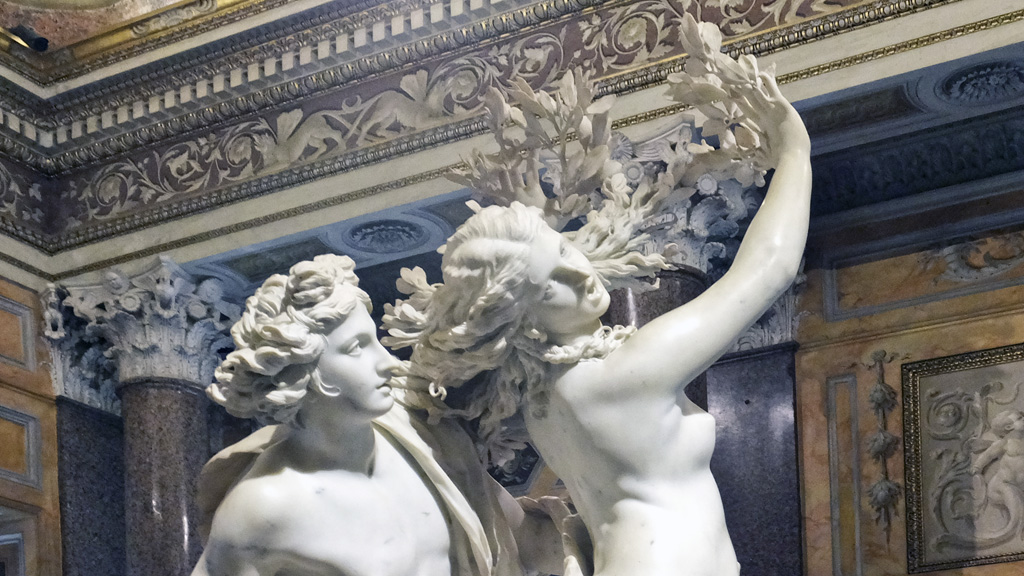
3) Living Large in the Villa Borghese
The Borghese Gallery is one of the most exclusive museums and finest collections of classical sculpture in the world. To strictly limit the number of visitors and avoid crowding, admission is by advance reservation only. You have to order tickets online at least 48 hours ahead and specify the time you want to arrive.
Be sure you’re on time because visitors are allowed only a maximum of two hours to tour. When time’s up, everyone is cleared out before the next set of visitors is allowed in.
But luxuriating in the treasure house of the Borghese family is the best two hours you’ll spend anywhere. Not only are the vast rooms on two levels of the palatial villa among the most ornate in Europe, the artworks are unsurpassed.
The collection of sculptures and paintings was started in the seventeenth century by Cardinal Scipione Borghese, a nephew of Pope Paul V. He was a patron to Bernini, whose ‘Rape of Proserpine’, ‘Apollo and Daphne’ and ‘David’ here are the quintessential classics of Baroque sculpture. The collection is also rich in the works of Caravaggio, Titian, Raphael and Rubens.
When you’re finished at the villa, head left for one of the world’s most scenic views. The Borghese estate was built on a hill so lofty, it allowed the family to look down at everyone in Rome. The view from the Pincio Hill is an unsurpassed panorama of the Roman skyline.
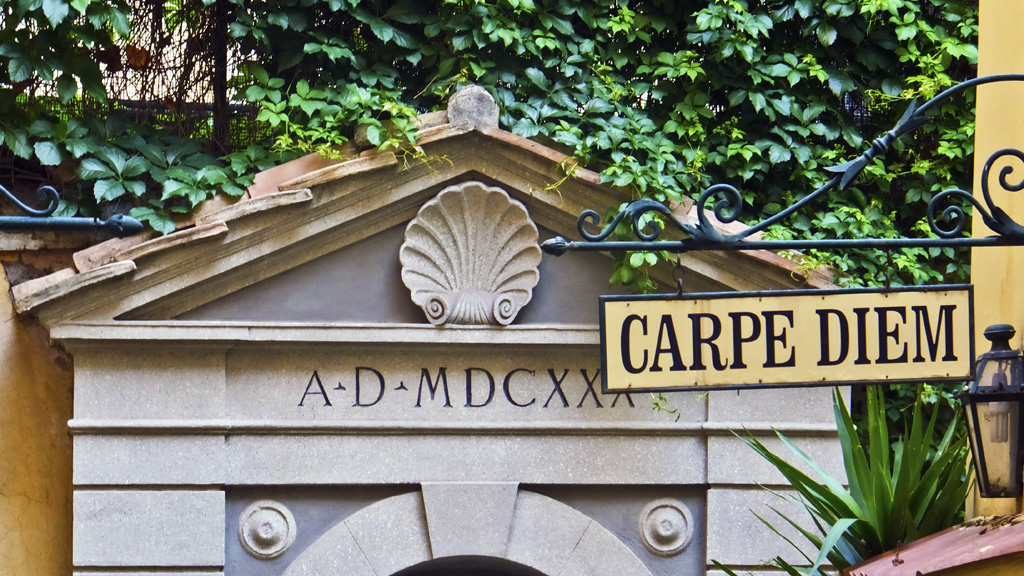
4) I lost my heart on the Via Coronari
This street of historic homes and churches built in the 15th and the 16th centuries is one of the most Renaissance-feeling routes in Rome. It was the main route for pilgrims heading to the Vatican’s St. Peter’s basilica and shops along here sold souvenirs and corone (rosary beads)—the source of the street’s name.
Today, the name might also suggest coronary, due to the prices of the antiques and art on sale in the galleries that have taken over the route. There are lots of scenic outdoor cafes that offer a great opportunity for people watching of the fashionistas and aristocratic families who call the street home.
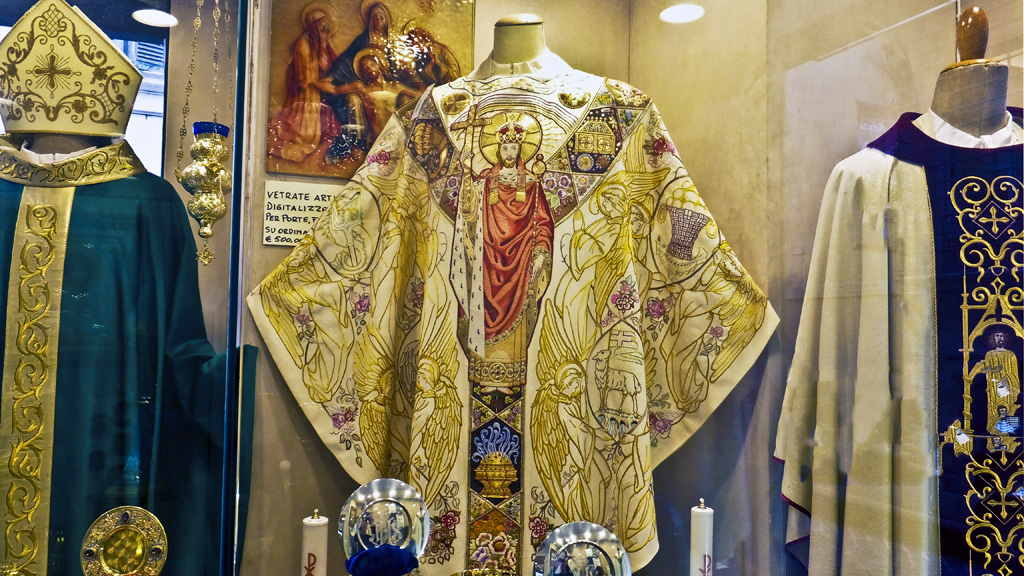
5) The street of the divine sewing machines
Ever wonder where Cardinals and Popes get their Sunday best made? Those full length robes embroidered with angels, the ermine trimmed stoles and shirts with dapper clerical collars make window shopping unique on the via dei Cestari.
It’s probably been a long time since there were nuns in the back rooms busily stitching details but Gammarelli, one of the poshest stores on the street, has been Papal tailors since 1798.
In colorful show windows, the detailing is incredible and the fabrics are as fine as any you’ll encounter anywhere. The show windows attract visiting clerics checking out vast arrays of vestments they won’t find back home.
If you’re not expecting election soon, you can always buy a souvenir, like some red knee-length socks–the same as worn by the Cardinals. Or how about a nice grey cardigan guaranteed to keep you cozy while saying vespers in a cloister or watching your kid at hockey practice?
And even though these shops take a lot of things on faith, they prefer cash or credit card, if you please.


